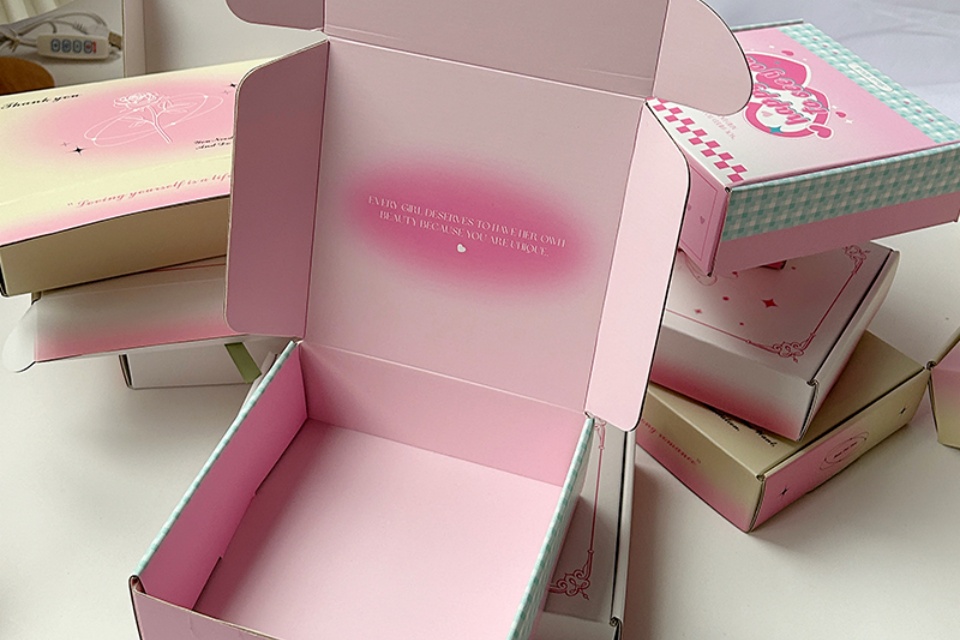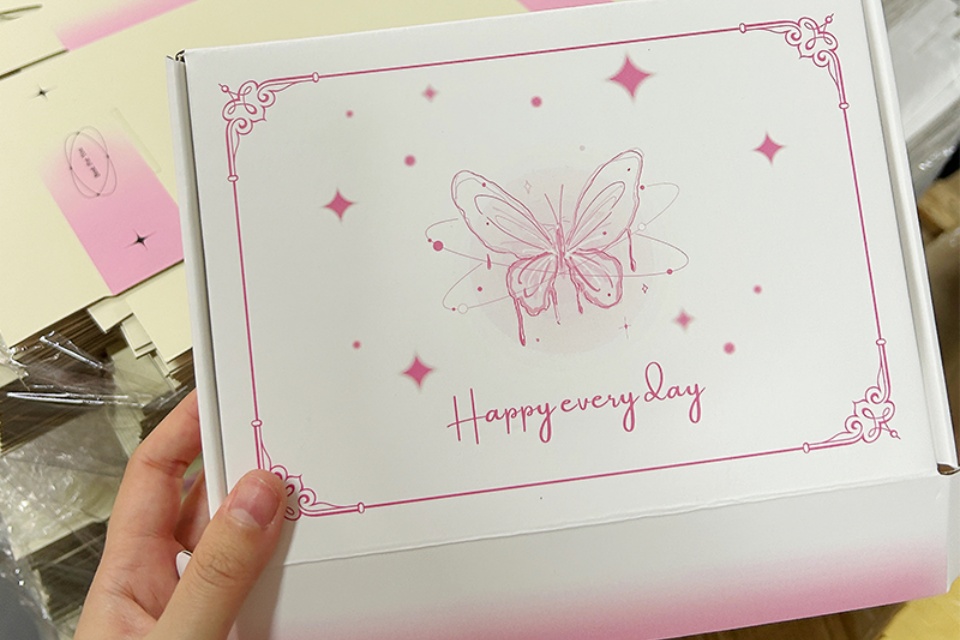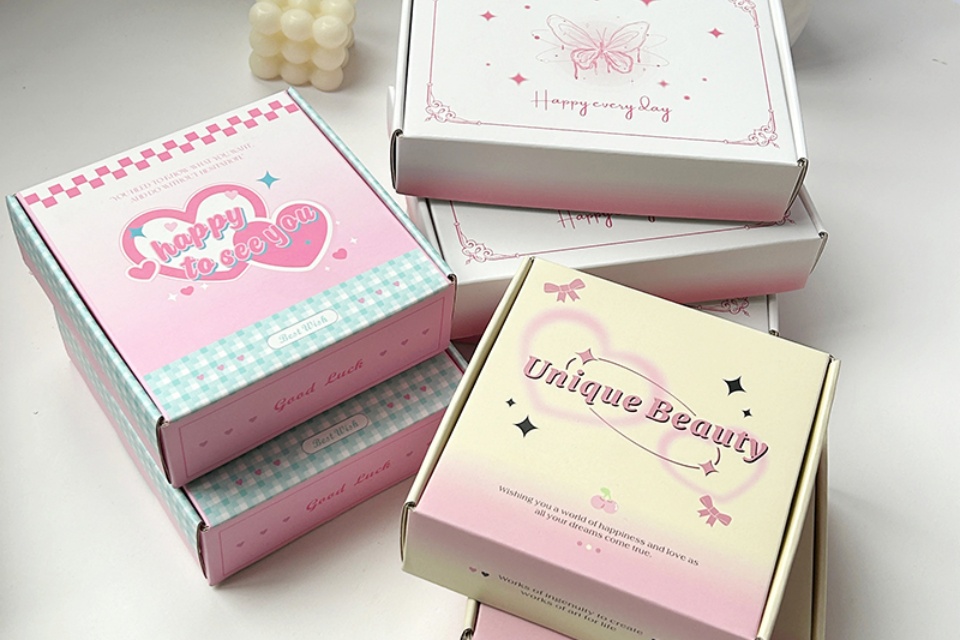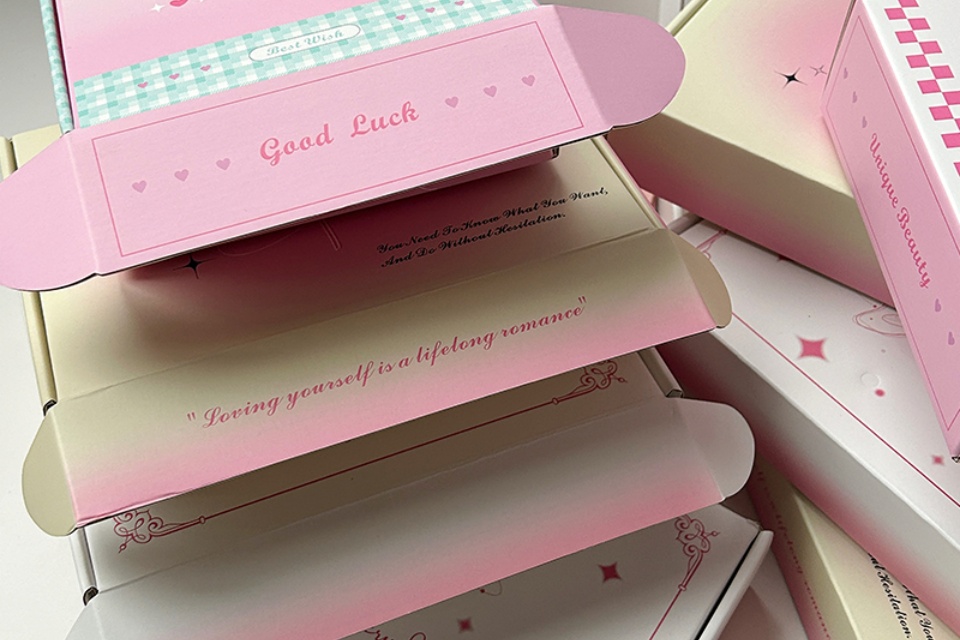Why Apparel Brands Need Custom Boxes
This article explores why custom boxes are vital for apparel brands, covering benefits like brand identity, improved customer experience, and sustainability.
Summary
Custom boxes have become an essential component for apparel brands seeking to enhance their market presence and improve customer engagement. By integrating custom packaging into their business strategies, these brands not only strengthen brand identity but also create memorable customer experiences that can significantly influence purchasing behavior. In an increasingly competitive landscape, the role of custom boxes extends beyond mere aesthetics; they serve as a vital tool for brand differentiation, customer satisfaction, and product protection, all of which are crucial for long-term success in the apparel industry.
One of the most notable benefits of custom boxes is their impact on brand recognition and loyalty. Packaging design elements—such as logos, colors, and typography—communicate a brand’s identity and values, allowing consumers to connect with the brand on a deeper level. Research suggests that brands with cohesive visual identities are more likely to foster customer trust and repeat purchases, further emphasizing the importance of packaging in shaping consumer perceptions. Additionally, a well-crafted unboxing experience can lead to a 60% increase in the likelihood of repeat purchases, demonstrating the direct correlation between packaging and customer satisfaction.
However, the shift towards custom packaging is not without challenges. Brands must navigate budget constraints, production limitations, and design intricacies while also balancing aesthetics with functionality and sustainability. As consumer awareness of environmental issues continues to rise, many apparel brands are turning to eco-friendly packaging solutions that resonate with their customer base and reflect their commitment to sustainability. The growing demand for sustainable practices introduces a layer of complexity in custom box production but also presents an opportunity for brands to distinguish themselves in a crowded market.
In summary, custom boxes are a multifaceted tool that not only enhances the visual appeal of apparel products but also plays a crucial role in improving customer experiences and brand loyalty. As the apparel industry evolves, the integration of thoughtful packaging strategies will remain a vital focus for brands aiming to meet consumer expectations while navigating the challenges of sustainability and market competition.
Table of Contents
Benefits of Custom Boxes for Apparel Brands
Custom boxes offer numerous advantages for apparel brands, playing a pivotal role in enhancing brand identity and customer experience.
Brand Recognition and Identity
Custom packaging serves as a crucial tool for brand recognition. The design elements—such as logos, colors, and typography—communicate a brand’s identity and values to consumers. This visual consistency helps to distinguish a brand from its competitors and fosters customer loyalty, as consumers are more likely to remember and trust brands that present a cohesive image through their packaging.
Improved Customer Experience
The unboxing experience is a significant aspect of customer satisfaction. Custom apparel boxes that are thoughtfully designed can create excitement and anticipation, enhancing the overall product experience. Research indicates that customers who enjoy a positive unboxing experience are 60% more likely to make repeat purchases. By investing in custom packaging, brands can elevate their customers’ journey from the moment they receive their order, thus improving retention rates.
Protection of Products
Quality custom boxes not only serve aesthetic purposes but also provide essential protection for the apparel inside. Properly designed packaging can prevent damage during shipping and handling, ensuring that products reach consumers in pristine condition. This not only reflects well on the brand but also reduces the likelihood of returns, which can be costly for businesses.
Competitive Advantage
In an increasingly saturated market, apparel brands must differentiate themselves to capture consumer attention. Unique and stylish custom boxes can enhance the perceived value of products, making them more attractive to potential buyers. This visual differentiation can lead to increased sales as consumers are more likely to choose brands that stand out on retail shelves or online.
Sustainability and Innovation
Modern consumers are increasingly aware of sustainability issues. Many brands are now opting for eco-friendly custom packaging solutions that align with their values. By utilizing recyclable or reusable materials, apparel brands can appeal to environmentally conscious customers and reinforce their commitment to sustainable practices. Additionally, innovative packaging designs—such as those incorporating interactive elements—can engage consumers further, creating a memorable connection with the brand.

Types of Custom Boxes
There are various types of custom boxes available, each offering unique characteristics and benefits suited to different packaging needs in the apparel industry.
Shipping Boxes
Shipping boxes are specifically designed for the transportation of products. Typically made of corrugated cardboard, these boxes come in various sizes and styles to provide durability and protection during transit, ensuring that apparel items arrive at their destination in excellent condition.
Mailer Boxes
Mailer boxes serve as an ideal packaging solution for mailing and shipping products. Usually crafted from paperboard or corrugated cardboard, they are available in multiple sizes and styles, offering a secure and visually appealing option for apparel brands looking to enhance their shipping experience.
Product Boxes
Product boxes are designed primarily for the packaging and display of apparel items. Made from materials like paperboard or plastic, these boxes come in various sizes and styles, making them perfect for retail environments where presentation is key. Their design allows for branding and information to be prominently featured, thus enhancing customer appeal.
Customization Options
Customization is a critical aspect of modern packaging design. Custom boxes can be tailored to fit specific needs, including shape, size, design, and branding elements. This means that brands can create a box that fits their apparel products perfectly, preventing movement during shipping and providing an extra layer of protection for fragile items. Furthermore, the customization process allows brands to incorporate unique features such as fitted dividers, inserts, and decorative elements that reflect their brand identity and appeal to their target audience.
Material Considerations
When choosing custom boxes, the materials used can significantly impact both cost and performance. Common materials include paper, cardboard, and various forms of paperboard, each offering different levels of durability and aesthetic appeal. For example, rigid boxes made from condensed paperboard provide a premium feel, suitable for high-end apparel brands. Conversely, kraft paper options are favored for their eco-friendly attributes, although they may not provide the same moisture resistance as other materials.

Case Studies
Successful Brand Implementations
Numerous brands have successfully leveraged custom packaging to enhance their market presence and consumer engagement. These case studies illustrate how tailored packaging solutions can contribute to a brand’s identity and operational efficiency.
Apple
Apple is renowned for its minimalist packaging, which reflects the brand’s core philosophy of simplicity and elegance. Their custom boxes not only protect the product but also create a premium unboxing experience that reinforces brand loyalty. The careful design minimizes waste while ensuring a visually appealing presentation, thereby enhancing customer satisfaction and reducing returns.
Nike
Nike has embraced sustainability through its innovative packaging designs, such as the ‘Nike One Box,’ which eliminates the need for an outer box. This concept reportedly reduces packaging waste by 51% for single online orders compared to traditional methods. The brand’s ‘Move to Zero’ initiative underscores its commitment to sustainability, with targets to cut waste in manufacturing and packaging by 10% by 2025. Nike’s packaging decisions resonate with environmentally conscious consumers, thereby strengthening brand loyalty among this demographic.
Coca-Cola
Coca-Cola’s packaging strategy emphasizes personalization at scale. By utilizing custom designs and limited-edition packaging, the brand creates unique customer interactions that foster deeper connections with its audience. This approach not only enhances the visual appeal of its products but also encourages repeat purchases through emotional engagement.
Adidas
Adidas recognizes the growing consumer demand for sustainable packaging solutions. The brand actively seeks to minimize its environmental impact by exploring eco-friendly materials and innovative designs. Analysts note that 78% of global consumers look for sustainable features when making purchases, compelling brands like Adidas to prioritize environmentally responsible packaging as a means of retaining customer loyalty.

Consumer Trends and Expectations
Recent studies indicate that consumers, particularly Millennials and Gen Z, prefer brands that align with their sustainability values. A 2023 Nielsen study revealed that 73% of global consumers would alter their consumption habits to mitigate environmental impacts. This trend illustrates the critical need for apparel brands to adopt custom packaging solutions that not only protect their products but also communicate their commitment to sustainability and responsible consumption.
Challenges in Custom Packaging
Custom packaging presents numerous advantages for apparel brands; however, it is not without its challenges. These obstacles can range from budget constraints and production limitations to design intricacies that must be navigated carefully to achieve effective results.
Budget Constraints
One of the primary challenges in implementing custom packaging is managing the budget effectively. While certain packaging options may appear affordable on a per-unit basis, the costs can escalate significantly when ordered in bulk, especially for small businesses that manage fulfillment independently. As shipping quantities increase, the cumulative costs can become a substantial burden, necessitating a thorough analysis of financial resources available for packaging solutions.
Production Limitations
Production capabilities also play a crucial role in the custom packaging process. Brands may face limitations related to the materials they can use or the complexity of the designs they wish to implement. These limitations can hinder the execution of a packaging solution that meets both aesthetic and functional requirements. To overcome these challenges, companies can collaborate with experienced packaging providers who can offer insights and help optimize the production process while keeping costs manageable.
Design Intricacies
The design aspect of custom packaging adds another layer of complexity. Custom packaging must not only reflect the brand’s identity but also provide adequate protection for the product during shipping and handling. Striking the right balance between eye-catching design and practical functionality can be difficult. Brands often grapple with ensuring that the materials chosen for packaging align with their environmental stance while also being durable enough to protect their products.
Need for Strategic Collaboration
To navigate these challenges effectively, it is vital for brands to engage in strategic collaboration with logistics providers, such as third-party logistics (3PL) companies. These partnerships can facilitate the identification of cost-effective packaging solutions tailored to specific products and brand values. Such collaborations can also help in securing better pricing through larger orders, thereby alleviating some financial pressure.

Measuring Impact
In the evolving landscape of the apparel industry, measuring the environmental and economic impact of packaging has become a crucial focus for brands aiming to enhance sustainability and customer satisfaction. One of the primary tools for this assessment is the analysis of customer feedback, which provides insights into packaging effectiveness and areas for improvement.
Customer Feedback Mechanisms
Direct Interactions
Brands can gather valuable information about packaging through direct customer service interactions. Training customer service representatives to inquire about packaging during calls, chats, or emails can yield actionable insights regarding user experience and satisfaction with packaging design.
Social Media Insights
Social media platforms serve as vital channels for understanding customer sentiment regarding packaging. Brands can monitor likes, comments, and shares of posts featuring their packaging to gauge engagement levels. Furthermore, user-generated content and influencer partnerships can amplify reach and foster community around the brand, providing real-time feedback on packaging perception.
Sales Performance Analysis
Sales performance metrics are a direct indicator of packaging effectiveness and can be analyzed using various tools. By comparing sales data before and after packaging changes, brands can assess the impact of design adjustments on consumer purchasing behavior. Additionally, analyzing regional sales data helps identify geographic preferences, enabling brands to tailor packaging to specific markets.
Comprehensive Environmental Impact Assessment
Brands must also consider the environmental implications of their packaging. Utilizing tools like the Global Impact Score can help evaluate the overall systemic environmental impact of packaging materials and designs. This assessment takes into account various categories of environmental impact, emphasizing that aspects such as particulate matter pollution and fossil resource use are significant contributors to a product’s global footprint, sometimes overshadowing the carbon footprint.
By focusing on the lifecycle stages of packaging—from raw material sourcing to manufacturing—brands can identify key areas for impact reduction. For instance, a substantial percentage of environmental impact typically arises from the raw material and manufacturing stages, reinforcing the need for sustainable sourcing and production practices.
